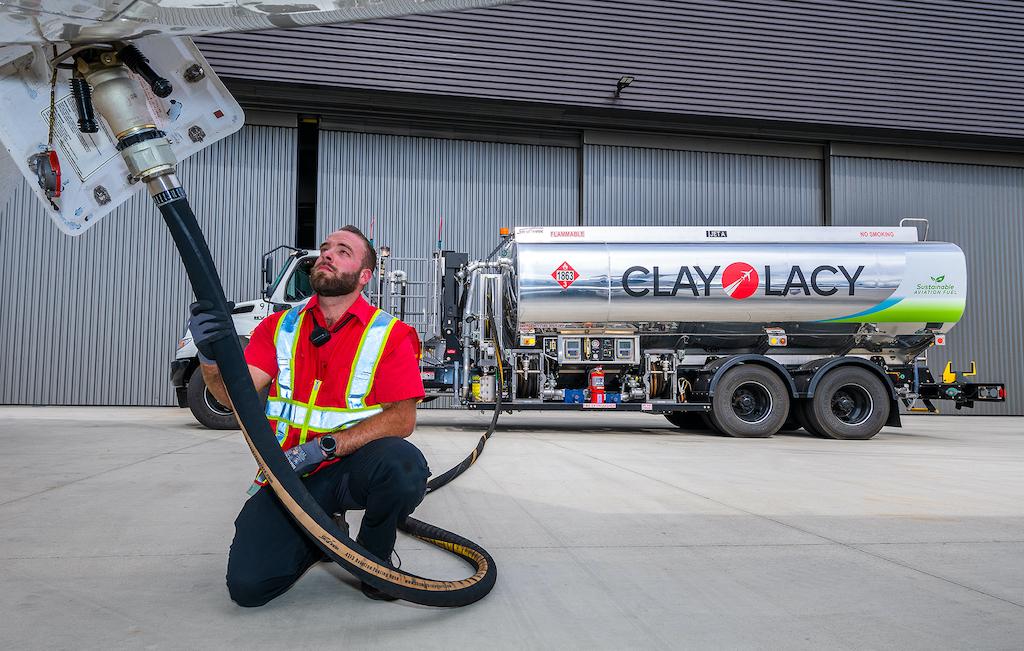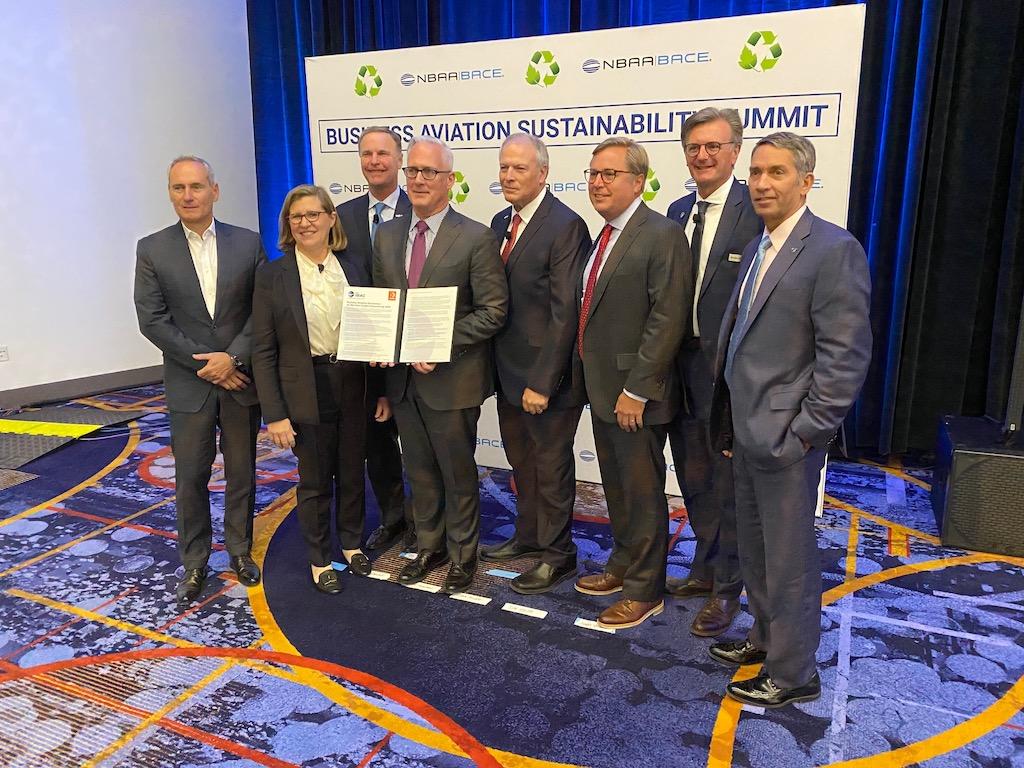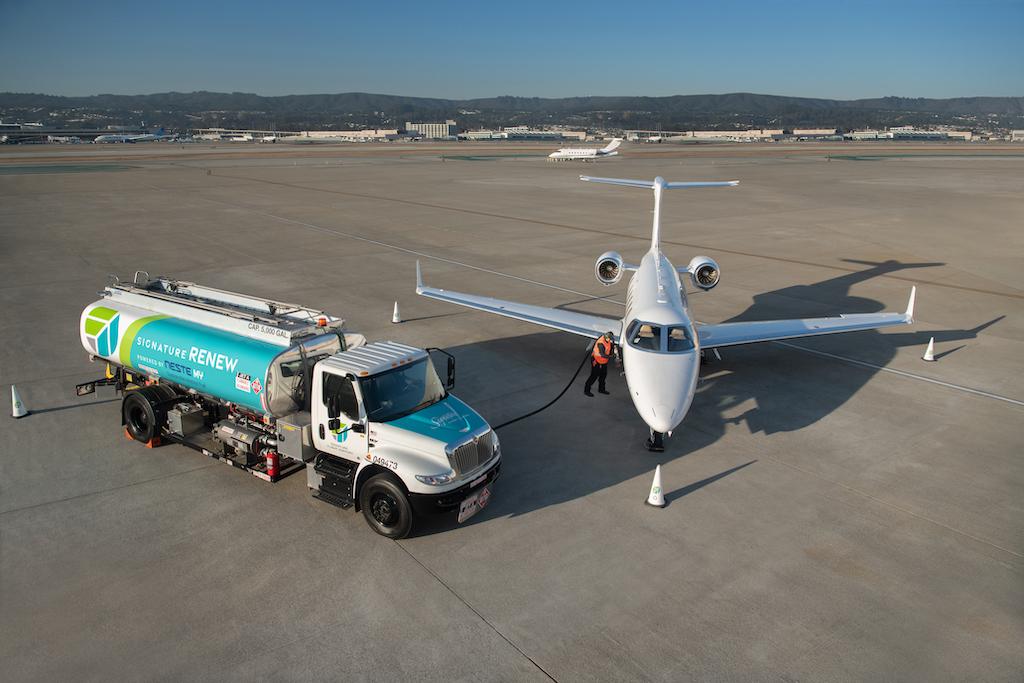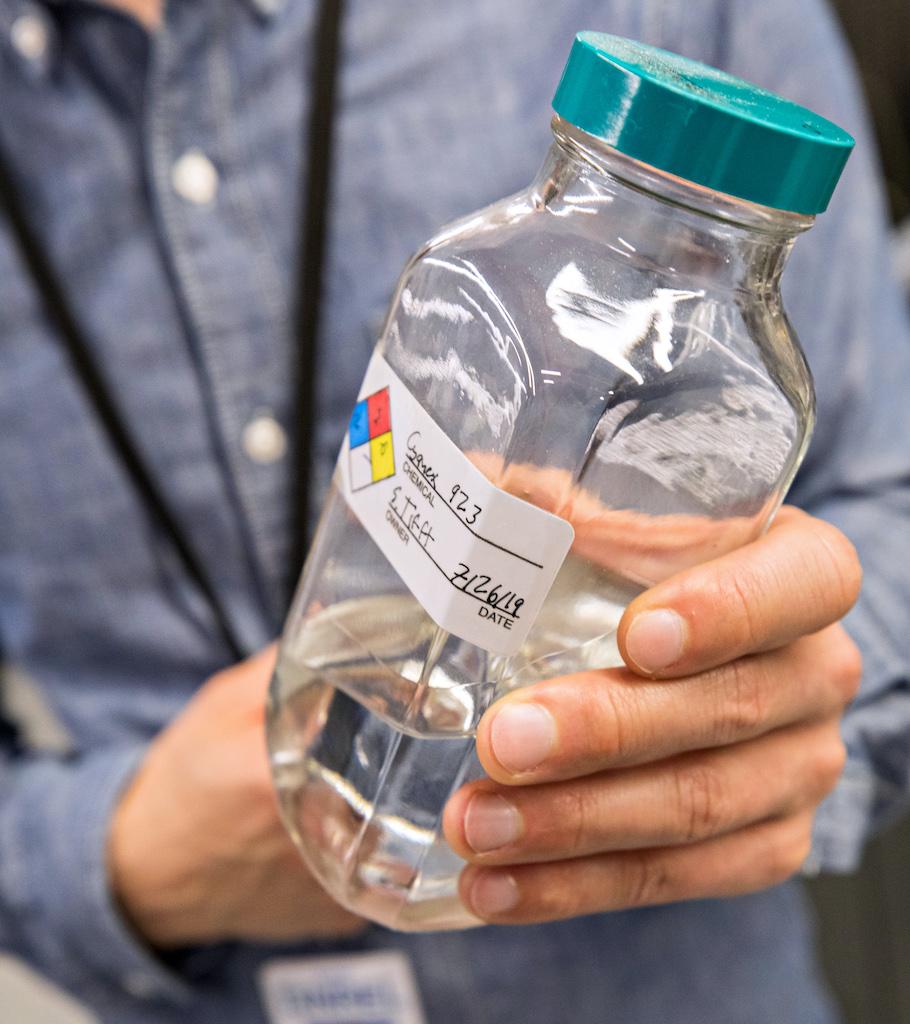
Discussions about sustainable aviation usually start with sustainable aviation fuel (SAF), which has gained a foothold in business aviation. Aligned with an industry goal of achieving net-zero carbon emissions by 2050, FBOs also are adopting environmentally friendly business practices ranging from installing solar arrays to replacing plastic straws.
In November 2021, the National Air Transportation Association (NATA), which represents FBOs and other aviation service companies, unveiled a Sustainability Standard for Aviation Businesses. The standard describes a self-certification process that companies can follow to lower their carbon footprints. More recently, NBAA released guidance documents for a new Sustainable Flight Department Accreditation Program.
The trend toward sustainability is gathering steam even as the industry faces logistical challenges in delivering SAF to aircraft on the ramp and the specter of regulatory enforcement of emissions reductions.
A blender’s tax credit that would incentivize further SAF production, widely supported by business aviation, was contained in the Biden administration’s $1.75 trillion Build Back Better Act that has been stalled in the U.S. Senate since late 2021. Lawmakers are considering reviving pieces of the legislation, including one focused on the climate and clean energy.
Sustainability Goals

“We think [SAF] is a huge part of our ability to move toward our sustainability goals,” NBAA President and CEO Ed Bolen said during a Jan. 20 webcast. The blender’s tax credit “may be something that can go forward legislatively....in this Congress or in future Congresses. We believe it should be sooner rather than later.”
On another front, the industry is fending off an arbitrary shutoff of 100 Low Lead (100LL) avgas used by piston-powered aircraft. Last December, several general aviation (GA) associations asked the FAA to intervene after a “rushed” decision by the board of supervisors of Santa Clara County, California, to ban the sale of 100LL at two airports—Reid-Hillview (KRHV) and San Martin (E16)—as of Jan. 1. Initially, two of the four fuel providers at KRHV switched to offering Swift UL94 unleaded avgas, which only some piston aircraft can use.
The U.S. Environmental Protection Agency (EPA) announced on Jan. 12 it will evaluate whether emissions from piston-engine aircraft using leaded fuel endanger public health, a prelude to requiring new fuel performance standards under the Clean Air Act. Piston aircraft that operate on leaded fuel are the largest remaining source of lead emissions into the air, the EPA says. The agency plans to issue a proposed endangerment finding for public review this year and take final action in 2023.
Through the Piston Aviation Fuel Initiative, the FAA and industry have worked for a decade to develop an unleaded avgas “with the least impact on the existing piston-engine aircraft fleet.” Safely transitioning the piston component of the industry to unleaded avgas is “very important” to its sustainability aspirations, said Megan Eisenstein, NATA managing director of industry and regulatory affairs.
“The Environmental Protection Agency announced that it will evaluate whether lead emissions from piston-engine aircraft endanger human health and welfare,” Eisenstein said. “We’ve been waiting for this for years now. There are other fuel solutions out there like 94UL, but that only meets a certain percentage of the piston fleet. This issue is becoming more and more important. I’m at least on a call once a week about it.”
Sustaining SAF

While leaded avgas faces extinction, SAF for jets and turboprops is gaining ground. Signature Flight Support, refiner Neste and fractional fleet operator NetJets announced the arrival of a “continuous supply” of SAF at Signature’s San Francisco International Airport and London Luton Airport FBOs in late 2020.
In December 2021, Signature counted seven airports—including in California, Texas and London—at which it provides a permanent supply of SAF, with more locations planned. It had pumped 5 million gal. since September 2020. “We continue to pump thousands of gallons per day and our commitment is only growing,” Marty Kretchman, Signature’s senior vice president of operations planning, told BCA.
Among other FBO chains, Atlantic Aviation’s location at Los Angeles International Airport (LAX) announced in April 2021 it would replace 100% of its fossil-based diesel fuel with renewable diesel to power its ground support equipment. On Jan. 27, Atlantic Aviation said it now offers SAF for retail sale at LAX and expects SAF eventually will account for 8% of its total jet-fuel volume there.
‘SAF Is Jet A’

A “drop-in” fuel, SAF has a similar chemical composition to fossil fuels and can be pumped and stored within an FBO’s existing fuel infrastructure. It contains the same hydrocarbons and produces the same emissions as fossil-based kerosene, but derives its hydrocarbons from more sustainable sources—such as used or waste cooking oils, tallow, waste biomass and municipal solid waste—resulting in a net reduction of emissions when compared to fossil-based jet fuel on a lifecycle basis.
SAF refined from sustainable feedstocks is certified under ASTM D7566, a standard specification for aviation turbine fuel containing synthesized hydrocarbons, and then blended with fossil jet fuel and certified under ASTM D1655, which defines properties of Jet A fuel. “At this point, it can be delivered as a drop-in product to existing fuel farms and airplane wings,” explains aviation sustainability rating company 4AIR.
“There are a lot of myths,” about the composition of SAF, and whether it can be pumped safely into working jets, noted NATA President and CEO Timothy Obitts. “SAF is Jet A; it is certified as ASTM D1655, with the same carbon-chain molecule,” he assured.
Sun Air Jets started selling SAF at its Camarillo Airport, California, FBO in March 2021. “Our first experience was that the fuel is sitting here, but no one was quite certain they wanted to take it,” Sun Air President and CEO Brian Counsil recounted to BCA. “Is it going to hurt my engines? What is it? Does it leave a residue? It’s made out of recycled cooking oil—does it smell like fried chicken? The people you had to first convince were the pilots, then you can get through to aircraft owners, who want to be more sustainable.”
The company began using SAF for its managed charter fleet, then signed on a large customer at its Camarillo base “once their corporate leadership realized the benefits of SAF and the carbon-offsetting attributable to it,” Counsil said. “And then the FBO transient customers—programs like NetJets, XOJET and some of the others—they wanted to start to take SAF.” As of late 2021, SAF represented 10% of Sun Air’s fuel sales.
Clay Lacy Aviation provides SAF as well as renewable diesel fuel at its FBOs at Van Nuys Airport and John Wayne Orange County Airport in California through an agreement with World Fuel Services. The company sold 75,000 gal. of SAF from April through December 2021; this year, it has committed to taking at least 200,000 gal., said Scott Cutshall, senior vice president of business operations.
“We’re seeing the most interest from the corporate flight departments,” Cutshall explained. “I think that’s for two reasons. One, the parent corporations already have sustainability initiatives and so this is a way for the flight department to now participate in the corporation’s sustainability initiatives. And now that [SAF] is actually available in a number of locations, they can budget for it and plan to uplift it. [Also] Flexjet, a large fractional operator, has been buying quite a bit. Between the corporate flight departments and Flexjet, we’re really starting to see the interest build.”
Next: The "green attribute" and the business case for SAF.





